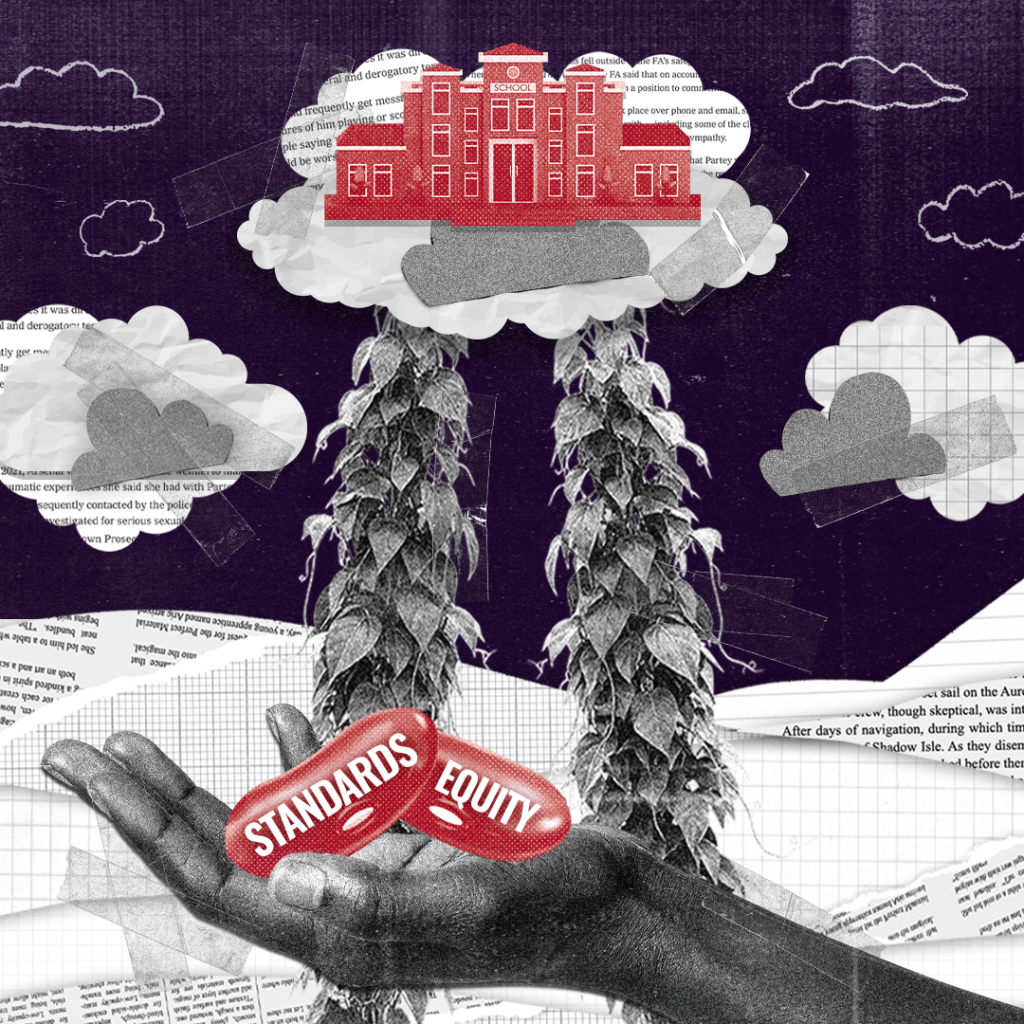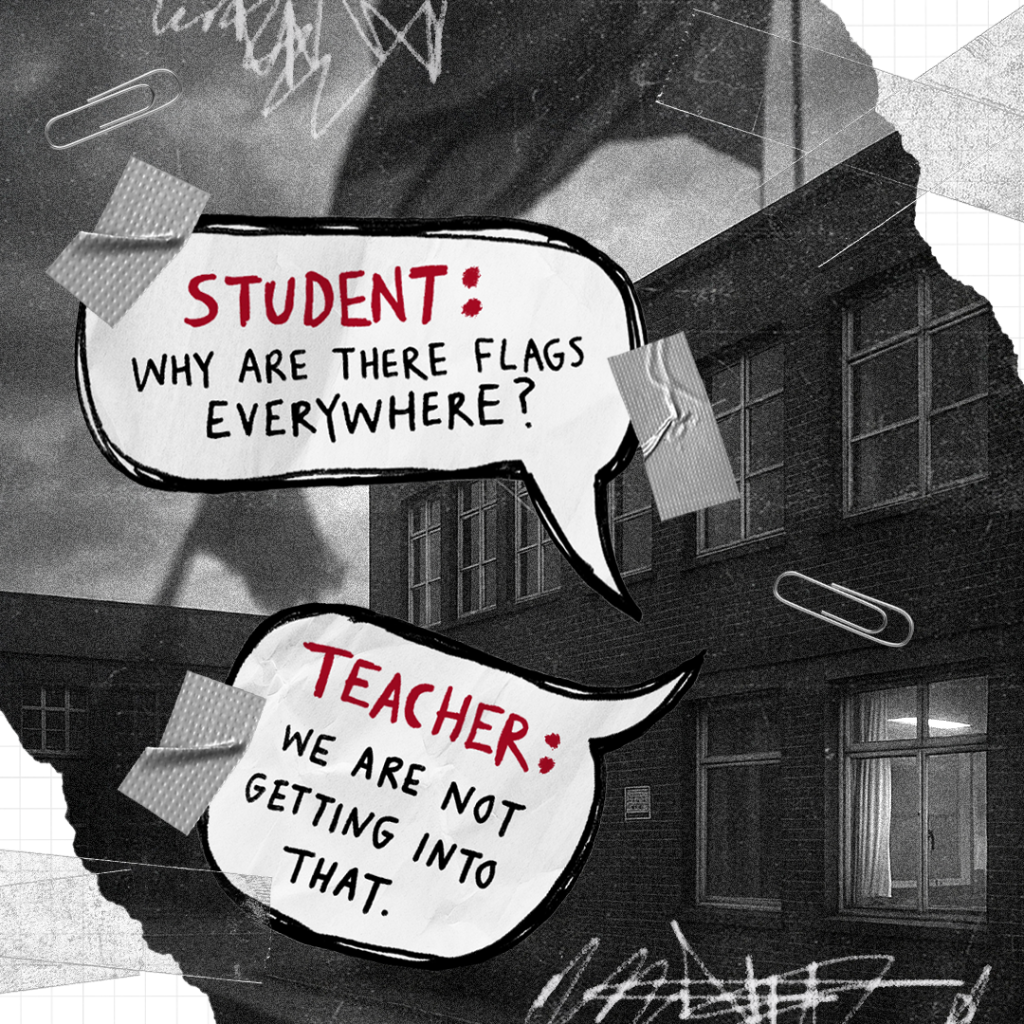This Isn’t Soft — It’s How You Raise the Bar
Let’s be honest. In education, equity and high standards are too often treated as opposites; one soft, one rigorous. The message is clear: you can care about children or you can care about attainment, but not both. The story we’ve been sold is that these are competing vines. The truth? They’re meant to intertwine. Each one makes the other stronger, and together they reach heights that seemed impossible.
That split is not an accident. It keeps the system tidy for adults and punishing for children.
It is also false.
Equity and high standards are the same work. When we separate them, we lower the bar and call it excellence, what Martyn Oliver calls the ‘soft bigotry of low expectations‘. In our work with schools, we come up against this assumption regularly. So let’s dismantle it.
The False Choice We’ve Been Sold
Schools are organised to make the split look sensible. There’s a head of curriculum here and a head of wellbeing over there. Someone owns behaviour while someone else owns teaching and learning. The architecture invites an escape hatch.
In the pursuit of grades, we quietly park the humanity of children because it sits in a different office. That convenience is costly. It tells staff that care is optional and children that belonging is conditional. It trains us to confuse control with standards.
What We Actually Mean by “High Standards”
Chasing grades for the league table is not a standard. It’s a scoreboard.
Real standards live in the learning. They are the habits of thinking that let children name the world clearly and act on it with care. As we learn from Paulo Friere, when teaching is dialogic, when lessons connect power, knowledge and everyday life, understanding gets deeper. Grades follow as a by-product, not the point.
We want children to engage deeply with learning. We refuse to make exam performance the ceiling of our ambition.
Care Is Not “Let Them Do Whatever They Want”
There’s a loud narrative that says child-focused, affirming approaches to behaviour produce chaos in school and children who can’t manage in the world beyond it. It’s convenient, and wrong.
Expanding freedoms, inviting greater democracy, or rethinking sanctions does not mean chaos. It means groundwork. It means adult conversation about purpose, expectations, and relationships. Throwing a door open without preparing the community is not care, it’s carelessness.
We’re not arguing for permissiveness. We’re arguing for a culture where boundaries are co-owned, understood, and trustworthy.
The Myths That Keep the Split in Place
Meritocracy. If you believe schools operate on a level playing field, then treating all children the same feels fair. It’s not. Children don’t arrive on equal terms because we’ve built a society that denies equal terms. Poverty, racism, and structural violence are not problems children have, they’re problems we do to children. You cannot pastorally nudge a child out of systemic inequality. You redesign the system and your practice to stop reproducing it.
Tradition. We confuse longevity with legitimacy. A practice that’s been around for decades gets defended as “high standards” even when it serves no educational purpose. Silent corridors, detention for the wrong socks, rigid seating plans; these aren’t standards, they’re habits. And habits feel safe for adults even when they’re stifling for children. Much of what we call rigour is just routine wearing a badge.
Optics. Grades are easy to count. Dignity is not. Where schools are judged by the data we measure, what is measured and what is not becomes a loaded decision. Meanwhile teachers feel the squeeze, drilling for SATs when they know it contradicts good practice, because the data matters more than the learning. That’s not high standards. That’s performance management dressed up as education.
Recoupling Equity and High Standards in Education in Practice
If equity and standards are the same work, our practice must show it.
Design for thinking, not compliance. To truly achieve equity and high standards in education, design lessons for thinking, not compliance. Plan learning experiences that require perspective-taking, debate, and real-world application.
Make relationships part of the curriculum. Treat connection as a condition for learning, not a bolt-on in tutor time. Build routines that communicate high care and high expectations at the same time.
Align the adults. Stop outsourcing humanity to the pastoral lead. Every adult carries responsibility for culture and learning.
Resource staff confidence. Give teachers time to plan dialogic lessons, to practise facilitation, and to reflect together. Confidence reduces the urge to over-control.
Interrogate the rulebook. If a policy wins quiet but loses trust, it’s not raising standards. Rewrite it with children, families and staff in the room. That’s what shared power looks like.
What This Looks Like for Leadership
Leaders who refuse the split behave differently. They don’t ask, “Do we care about wellbeing or results this term?” They ask, “Where is our curriculum shrinking thinking? Where do our routines undermine dignity? How might this affect the quality of relationships in the community?”
They invest in professional learning that grows judgement, not just compliance. They treat equity as the method of achieving excellence, not the PR that follows it.
A Note on Accountability
We’re not allergic to accountability. We’re allergic to nonsense. If your data story cannot sit alongside a child’s story with integrity, your system is performing, not educating.
The aim is simple: a school where young people are seen and treated as fully human. A school where staff can teach with rigour and care. A school where attainment is real because understanding is real.
Sit with This
Who benefits when equity and standards are split apart? Who gets blamed? Who gets protected?
If the answer makes you uncomfortable, stay with it. Then act. Our Foundational Learning cycle works with school leaders and educators to redesign culture, curriculum and policy from the ground up. Not as a bolt-on. Not as another initiative competing for attention. As the work itself.
The magic isn’t in choosing which vine to climb. It’s in watching them twist together, each one strengthening the other’s ascent. When equity and high standards grow from the same soil, they create something taller than either could manage alone.











